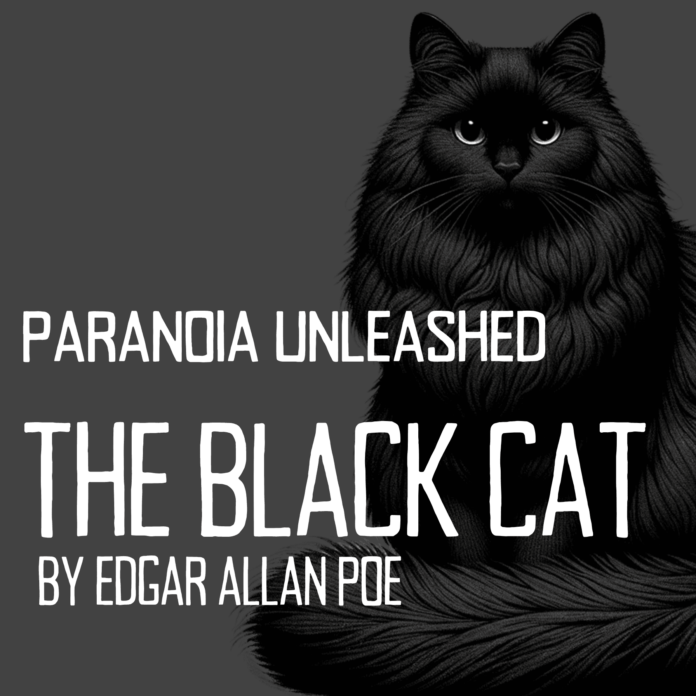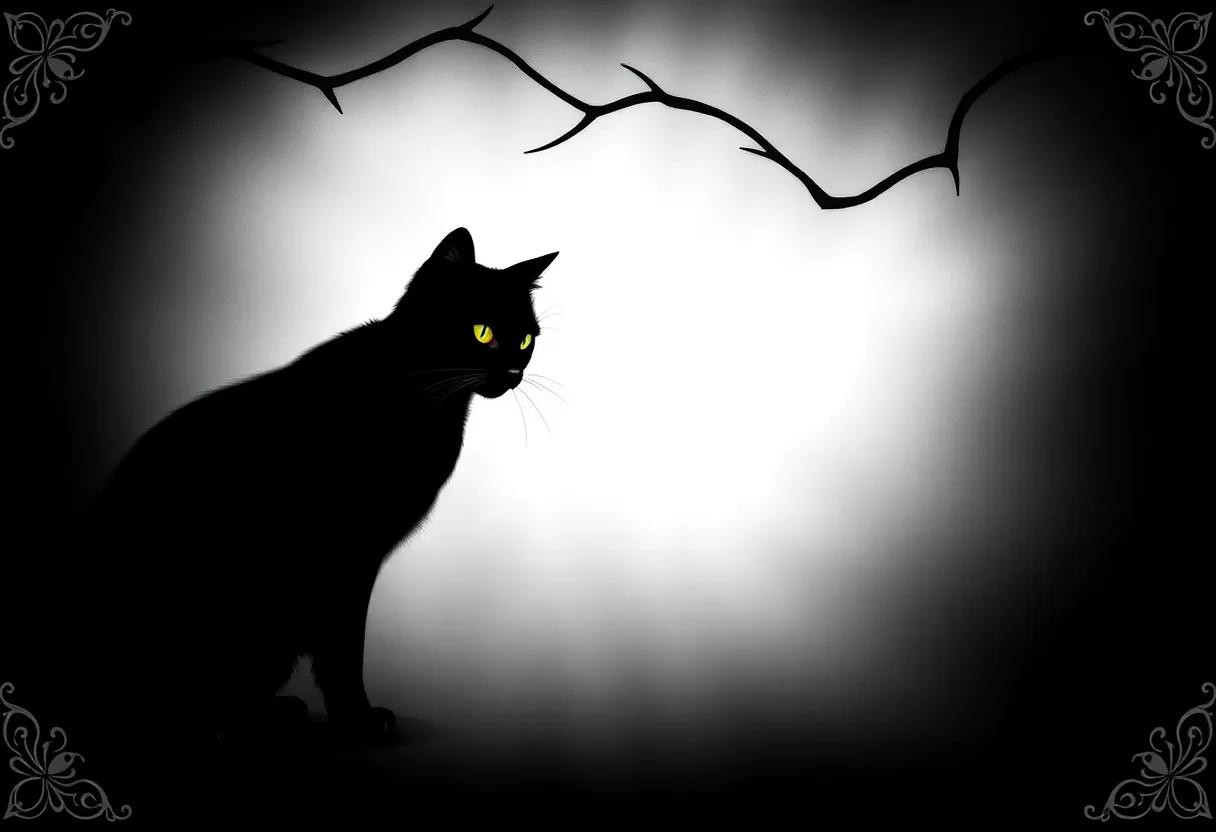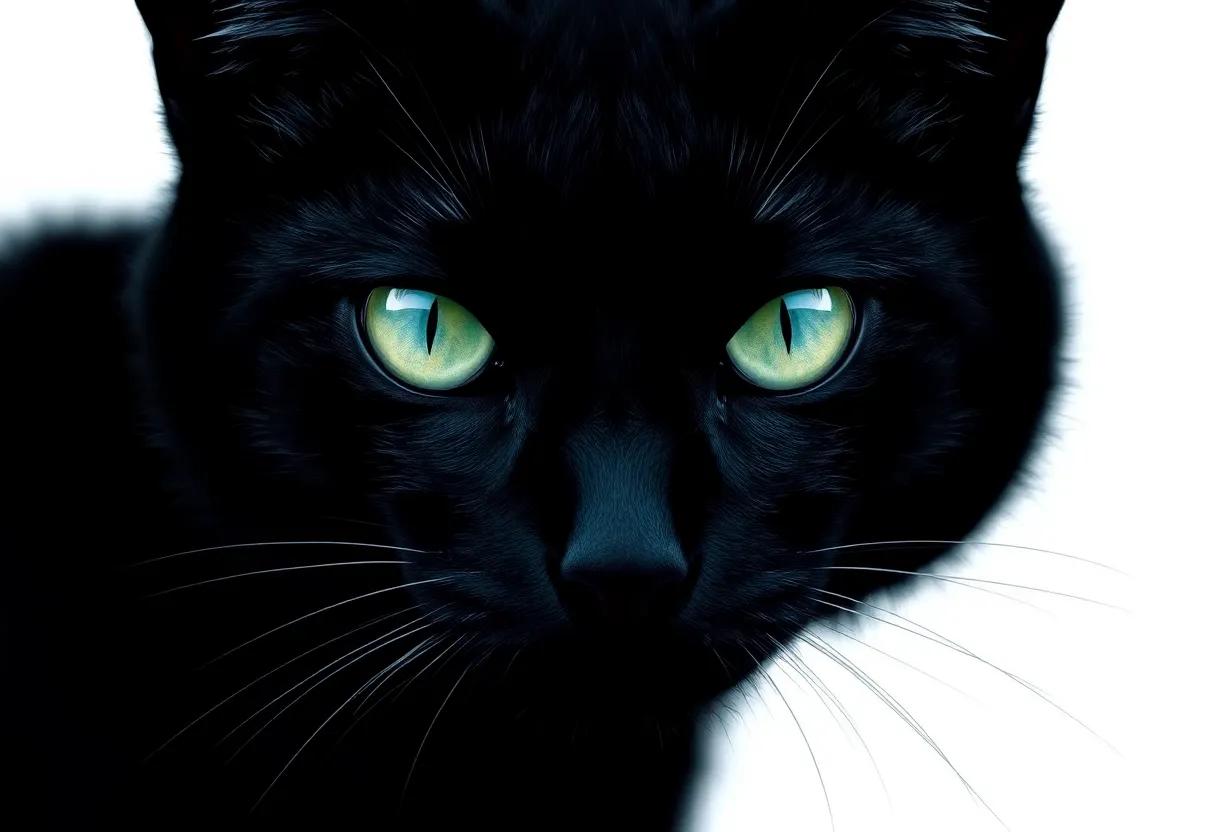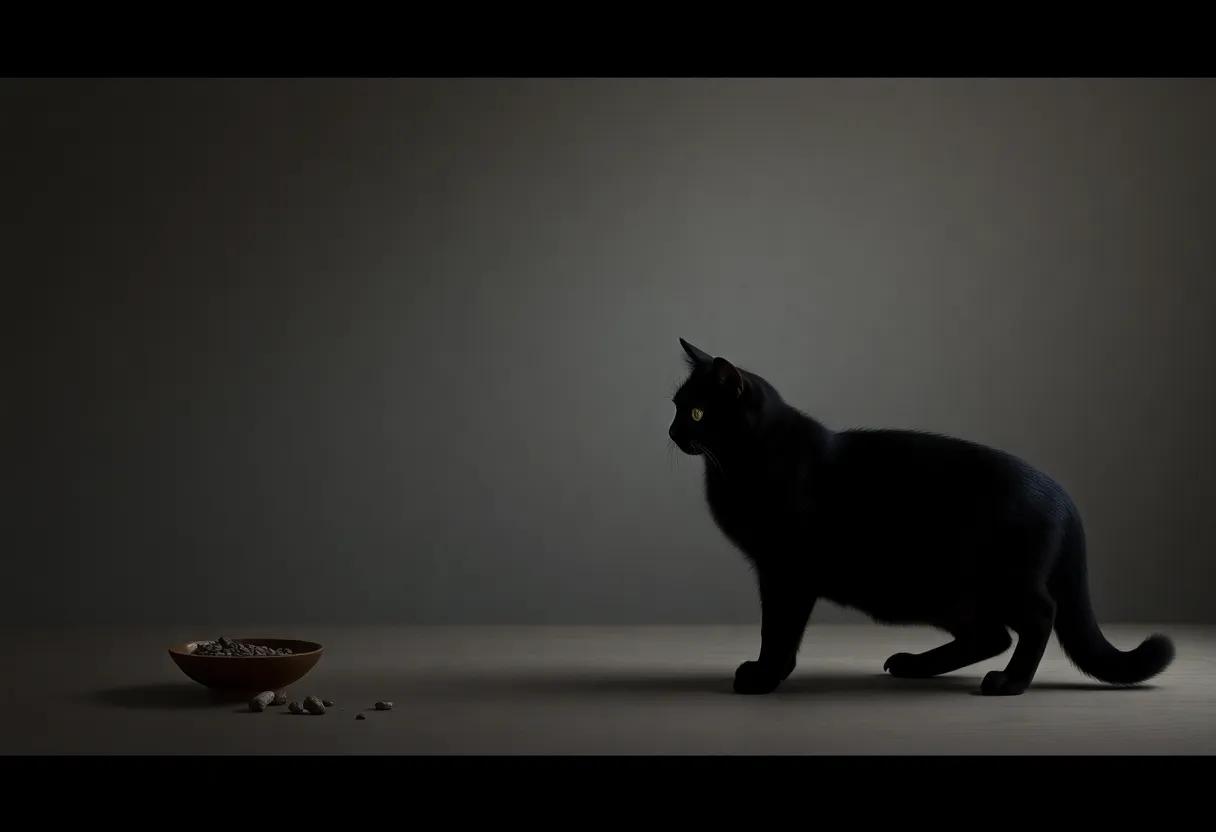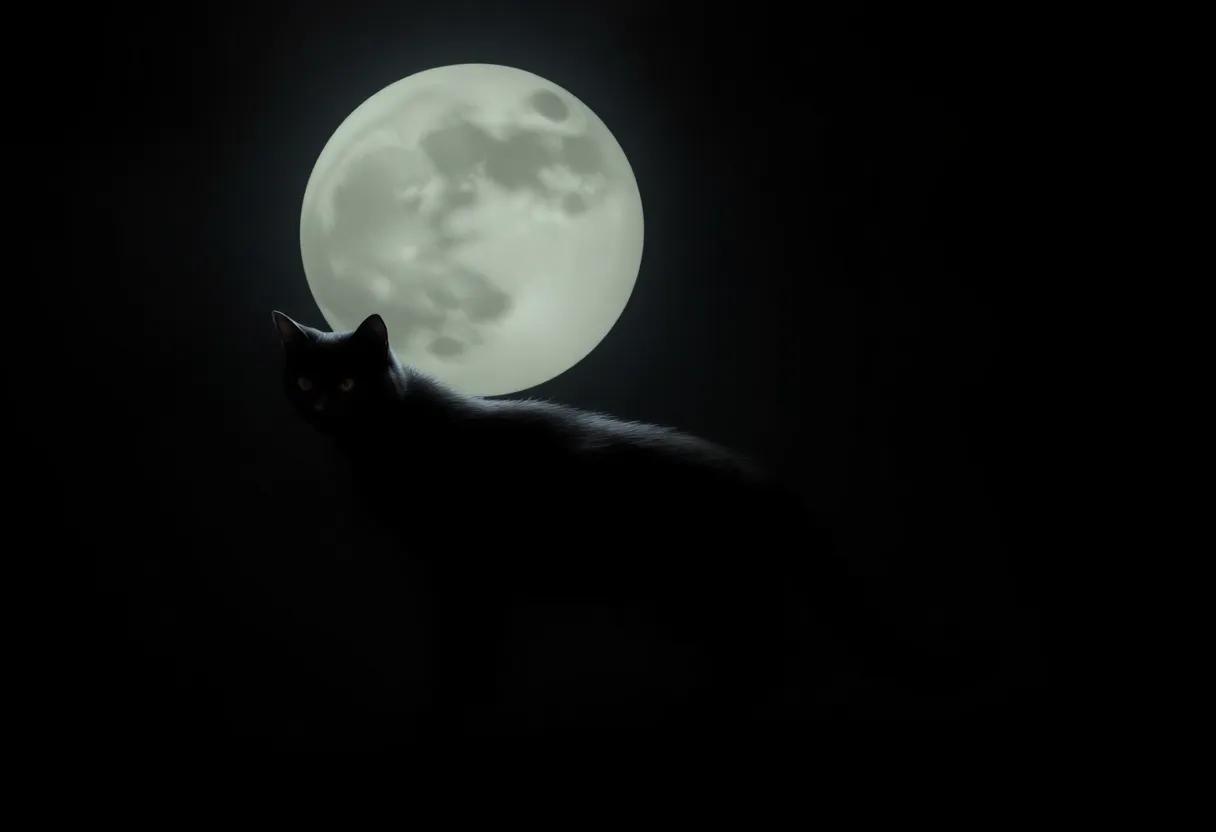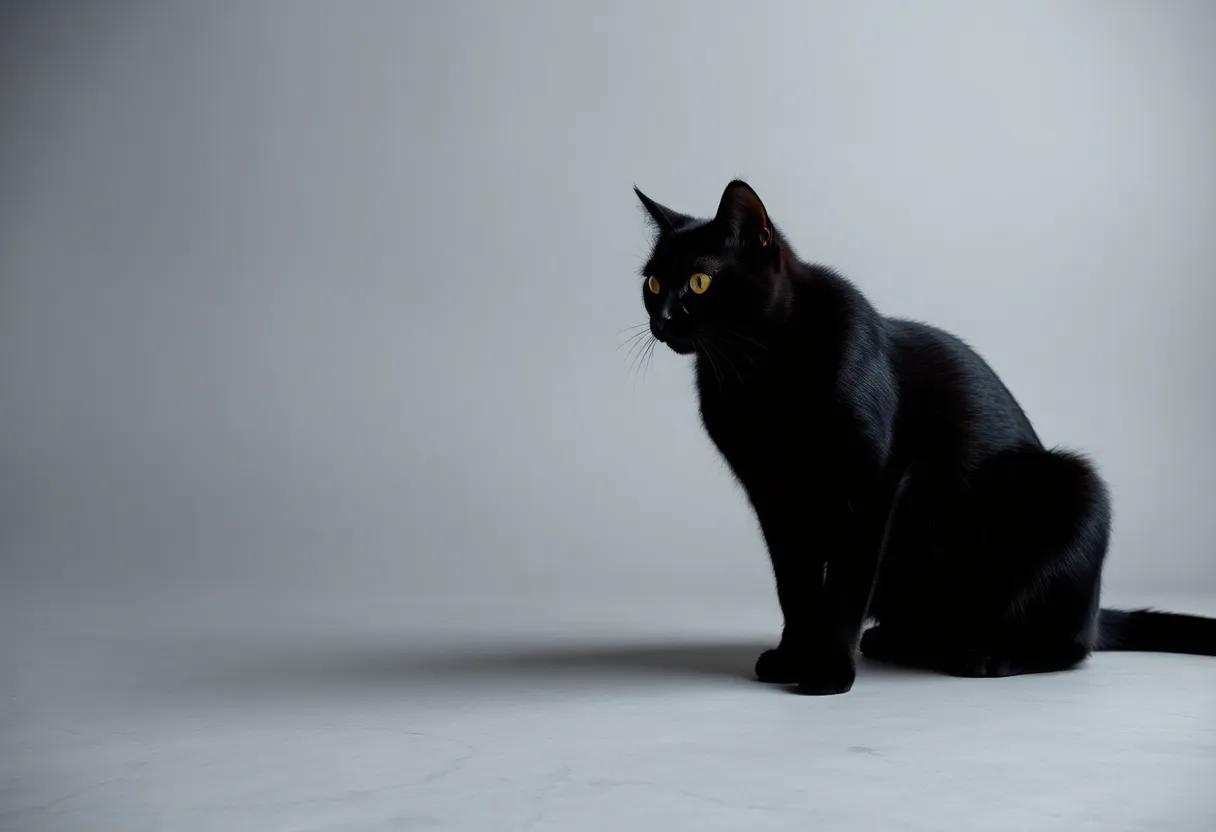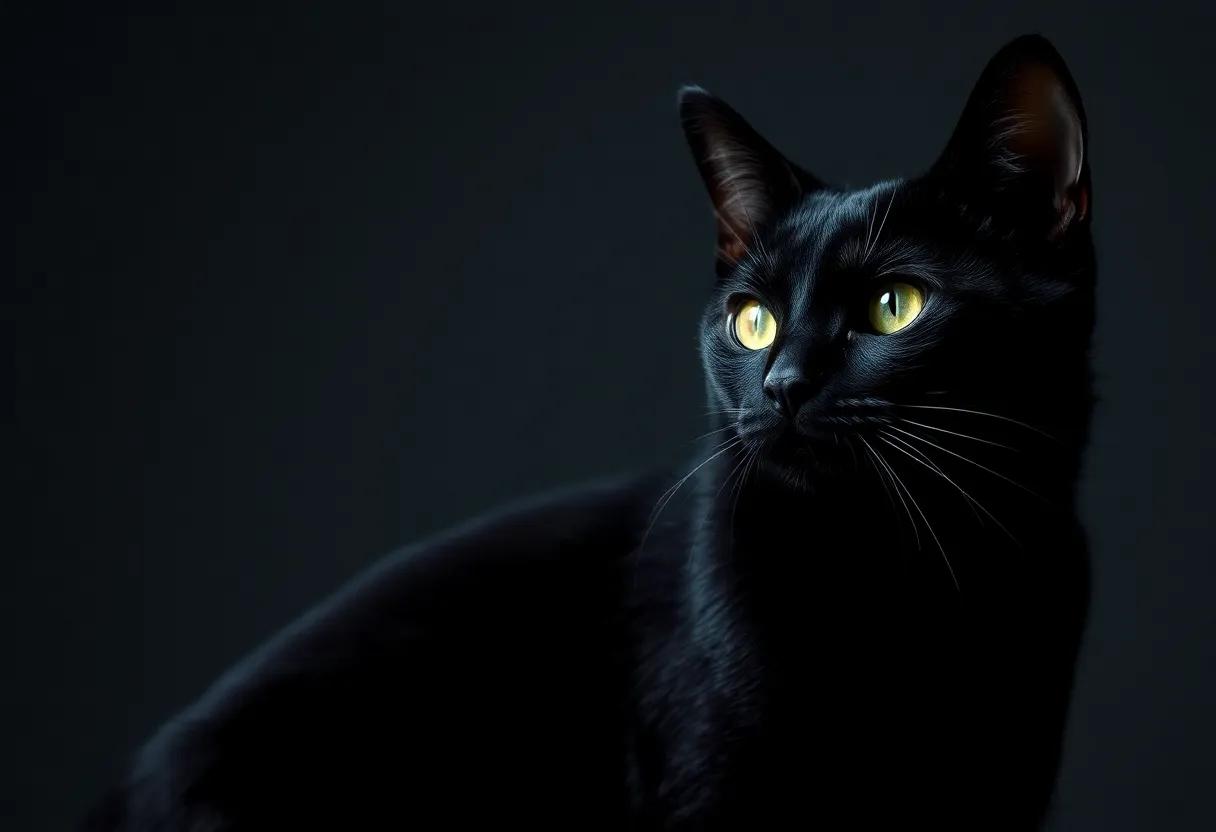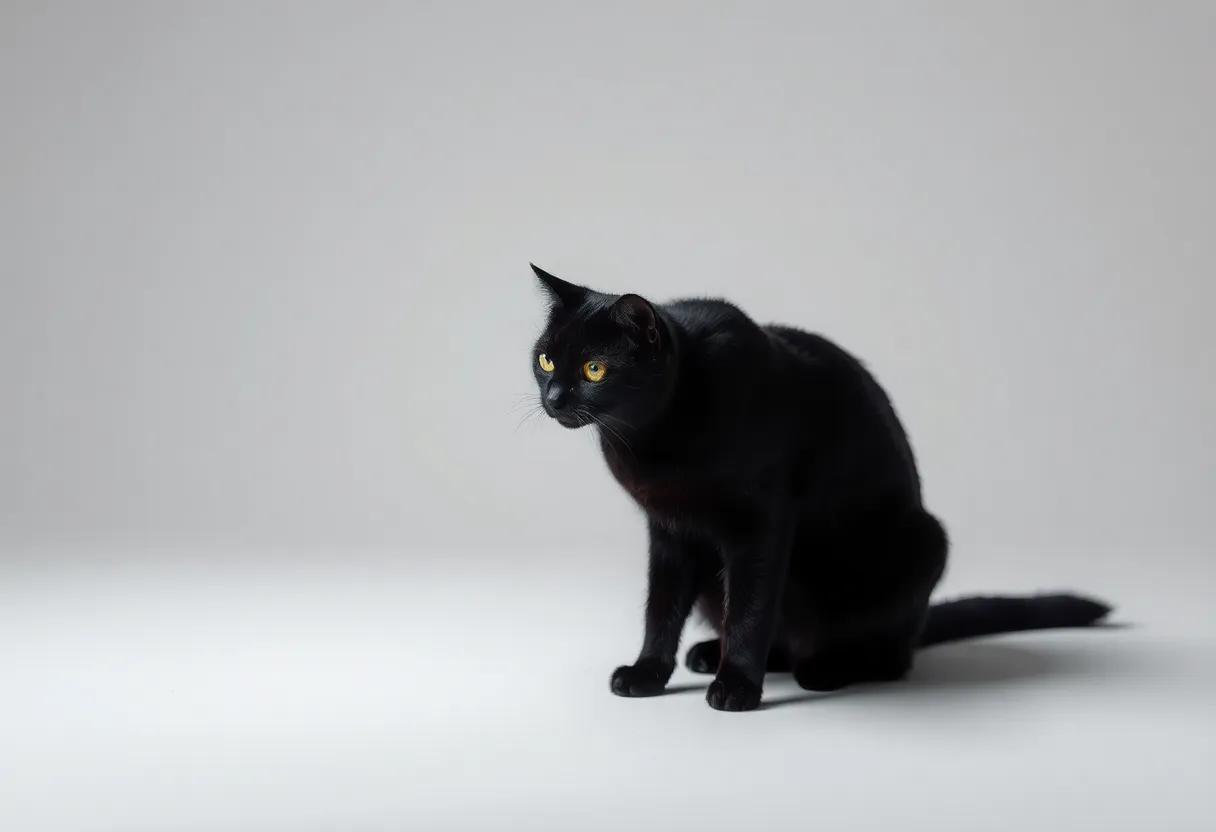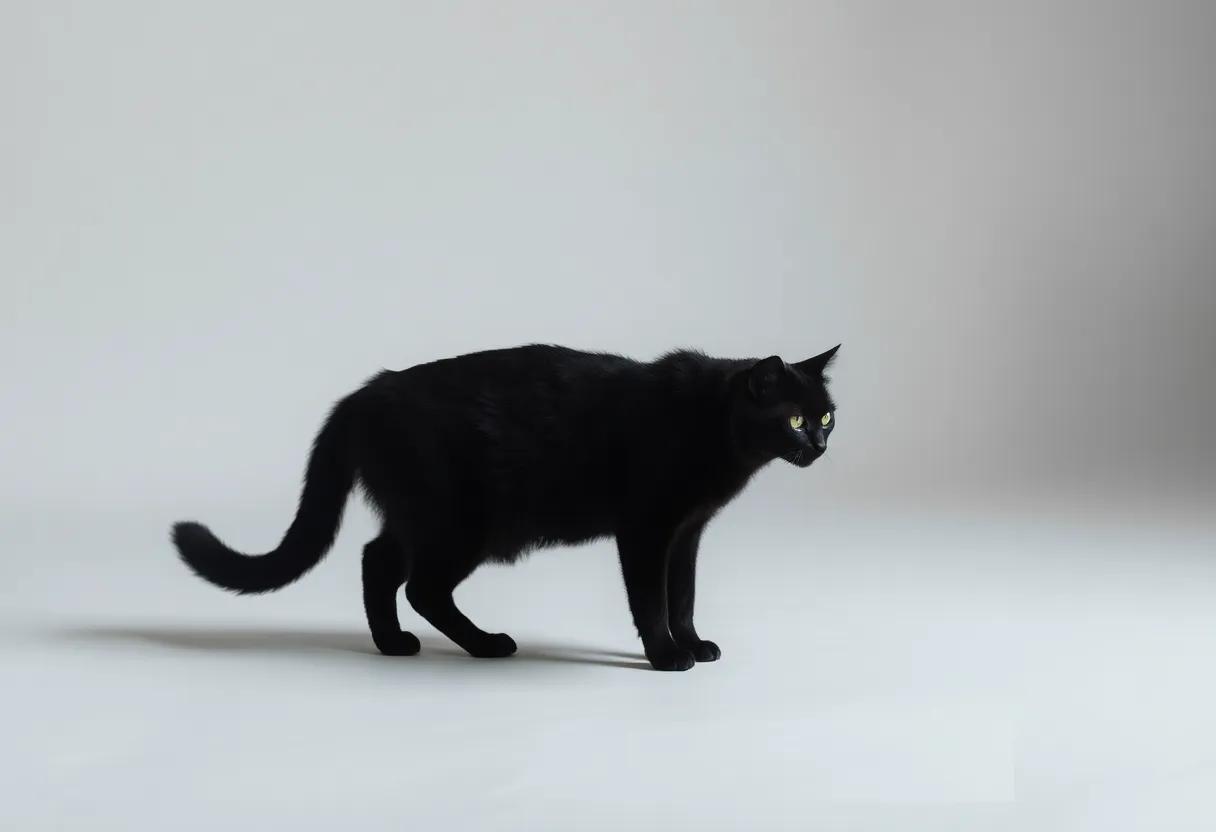In the shadowy recesses of literary exploration, few authors ignite the inventiveness quite like Edgar Allan Poe. His tales often blur the lines between sanity and madness, reality and illusion, inviting readers into a labyrinth of psychological intrigue.One of his most notorious works, “The Black Cat,” stands as a chilling testament to the complexities of human nature and the specters that haunt the mind.In “‘,” the author beckons us to delve deeper into this haunting narrative, guiding us through its twisted corridors with compassion and clarity. This review aims to illuminate the layers of meaning within the text, examining how the interplay of guilt, violence, and the supernatural unfolds in Poe’s signature gothic style, while reflecting on the broader implications of the story in our contemporary world. Join us as we embark on this reflective journey, peeling back the darkness to reveal the truths that lie within.
Exploring the shadows: Themes of Guilt and Madness in Poe’s ‘The Black Cat
poe’s masterful exploration of the human psyche is vividly encapsulated in his disturbing narrative, where guilt emerges as a suffocating force that slowly drives the narrator into the abyss of madness. The story unfolds through a chilling confession, revealing how the protagonist’s violent tendencies toward his beloved cat reflect a deeper moral decay. This dark relationship serves as a metaphor for the inexorable grip of guilt,manifesting in various forms:
- Inner Turmoil: The narrator’s descent into madness showcases the psychological battle between self-loathing and the desire for redemption.
- Violent Obsession: The brutality he inflicts on the cat mirrors his internal chaos and the unraveling of his rationality.
- Paranoia: The constant fear of being discovered emphasizes how guilt can morph into an all-consuming delusion.
As the plot weaves through the shadows of human frailty, Poe crafts a stark depiction of how guilt can warp one’s sense of reality. The recurring imagery of the cat, particularly its uncanny resemblance to the narrator’s victim and the haunting presence it embodies, acts as a catalyst for the impending breakdown. This relationship can be illustrated as follows:
| Symbol | Meaning |
|---|---|
| Black Cat | Personification of guilt and the supernatural |
| Violence | Manifestation of repressed emotions and insanity |
| Alcoholism | Gateway to moral decline and loss of control |
Through these layers, Poe not only crafts a gripping narrative but also invites readers to reflect on the fragility of the human mind when tainted by guilt. The haunting conclusion serves as a stark reminder of the boundaries between sanity and madness, where the consequences of one’s actions can irrevocably alter the course of life, leaving behind an indelible mark on the psyche.
A Deep Dive into Symbolism: The Role of the Cat in Reflecting Inner Turmoil
The enigmatic presence of the cat in Poe’s narrative serves as a compelling mirror to the protagonist’s crumbling psyche, embodying both guilt and madness. As a creature traditionally associated with superstition and the supernatural, the cat transcends its physical form to encapsulate the narrator’s inner conflict. This duality is particularly evident in the way the cat morphs from a figure of affection into a relentless specter of torment, reflecting the narrator’s spiraling descent into paranoia and absolution. Every interaction with the feline becomes a ritualistic confrontation with his own dark impulses, illustrating how the very essence of the cat becomes intertwined with themes of betrayal and obsession.
Moreover, the cat’s striking black color plays a pivotal role in conveying the dichotomy of innocence corrupted by hidden malice. The protagonist’s initial affection for the animal quickly devolves into abhorrence, paralleling his moral degradation. This transformation emphasizes the psychological struggle inherent in human nature, where a once beloved companion is perceived as a harbinger of doom. the cat’s uncanny ability to reappear at pivotal moments in the story further fuels the narrator’s descent,serving as a physical representation of unresolved guilt. In contemplating this symbolic relationship, one can observe how Poe masterfully utilizes the feline figure to elucidate the complexities of the human experience, ultimately unraveling layers of internal strife that reflect the indelible shadows lurking within each individual.
Narrative Structure: the Impact of First-Person Perspective in Poe’s Work
The first-person perspective in Edgar Allan Poe’s The Black Cat draws readers into a disconcerting intimacy with the narrator’s unraveling psyche. By anchoring the narrative voice in the mind of an unreliable protagonist,Poe chiseled away at the reader’s understanding of reality,leaving them teetering on the brink of madness. through vivid visions and macabre confessions, we become acutely aware of the narrator’s descent into moral decay. This seductive form of storytelling envelops the audience, pushing them to question the line between the self and the darkness that lurks within, suggesting that the greatest horrors stem not from the external world but from the depths of the human soul itself.
Moreover, the use of stream of consciousness allows for a raw exploration of guilt and obsession. As the protagonist grapples with his violent impulses and haunted visions,readers are presented with a kaleidoscope of emotions and fragmented memories that represent his tormented state. Poe meticulously crafts moments of tension where the past and present collide, enabling the audience to experience the chilling effects of guilt as if they were living it firsthand. This interplay between the narrator’s subjective reality and the psychological horror enveloping him creates a unique narrative tension that plants itself deep within the reader’s psyche, beckoning them to peer into the abyss alongside the narrator.
Poe’s Use of Language: Analyzing the Poetic Prose and Dramatic Tension
Poe’s distinctive command of language serves as the backbone of his storytelling, merging poetic prose with visceral emotions to create an atmosphere thick with suspense. Throughout “the Black Cat,” he deftly employs vivid imagery and metaphorical language that transport the reader into the depths of the narrator’s psychological turmoil. Key elements that contribute to this immersive experience include:
- Symbolism: The black cat itself represents guilt and the inescapable nature of one’s conscience.
- Alliteration and Consonance: Utilizing rhythmic sound patterns enhances the eerie quality of the narrative.
- Descriptive Detail: Poe’s meticulous descriptions evoke a visceral response, pulling readers into the horrifying reality faced by the protagonist.
Along with his linguistic prowess, Poe masterfully builds dramatic tension that escalates throughout the tale. The plot unfolds with a meticulous layering of events that reflect the narrator’s descent into madness, compelling readers to question the reliability of his perspective. A succinct breakdown of the tension points includes:
| Event | tension Level |
|---|---|
| Alcoholism Takes Hold | Rising |
| Violence Against the Cat | Soaring |
| Murder of His Wife | Climactic |
This balance of lyrical expression and mounting suspense creates a magnetic pull, drawing the audience deeper into the morbid psyche of the narrator and inviting reflection on the darker aspects of human nature.
Psychological Insights: Understanding the Mind of the Unreliable Narrator
Delving into the psyche of the unreliable narrator in Poe’s “The Black Cat” uncovers a labyrinth of emotions and motivations that distort the truth. unraveled by guilt,alcoholism,and an intrinsic capacity for violence,the narrator’s grip on reality wanes,allowing readers to see the world through a warped lens. as he describes his descent into madness, his justifications blur the lines between self-awareness and self-deception. This duality emphasizes the complexity of human nature, revealing a mind that oscillates between remorse and rationalization, ultimately leading to a chilling refusal to accept responsibility for his heinous acts.
The unreliable narrator invites readers to question the very fabric of reliability, leading to the contemplation of how fear, societal pressures, and inner demons sculpt one’s narrative. As we dissect his thoughts and actions, it becomes evident that his perception of guilt is intricately intertwined with his existential anguish. the narrator’s haunting confessions serve as a canvas for exploring broader themes:
- Madness: The thin line between sanity and insanity.
- Alcoholism: A catalyst for moral decay.
- Identity Crisis: The dissolution of the self amidst tragic choices.
This psychological framework amplifies the tension within the story, leaving readers grappling with the unsettling realization that the most profound horrors often reside within the mind itself.
Moral Dilemmas: The Ethical Implications of Violence and Domesticity
Within the confines of a seemingly ordinary household, the darkness of the human psyche emerges, revealing the facade of domesticity that often cloaks underlying violence. In Poe’s “The black Cat,” we witness the protagonist grappling with his own moral decay, a once-loving pet transformed into a catalyst of his repressed guilt and rage. This descent into brutality tempts us to question the ethics of violence, especially in a domestic setting, where the line between love and hatred blurs. The psychological toll of abuse, both inflicted and received, is a poignant reflection of how household serenity can mask the deeper, frequently enough darker, human emotions, prompting a relentless cycle of violence that wreaks havoc on the soul.
The narrative not only reveals the consequences of the protagonist’s choices but also ignites a conversation about societal culpability in domestic violence. It invites us to consider how cultural norms and expectations shape individuals’ perceptions of morality and justice. Exploring these intricate dynamics reveals several critical points:
- Power and Control: The protagonist’s need for dominance manifests through his mistreatment of the cat, symbolizing his internal struggle with vulnerability.
- The Cycle of Abuse: The story illustrates how violence perpetuates further violence, creating a grotesque version of love and care.
- Moral Blindness: The inability to recognize the implications of one’s actions can lead to tragic outcomes, as seen with the chilling climax of the tale.
Such dilemmas push audiences to confront their own perceptions of morality in the face of domestic troubles. Considering Poe’s grim exploration,the ethical implications resonate beyond fiction,challenging readers to reflect on the interplay of violence and morality in their familiar environments.
Connecting with the Audience: The Emotional Resonance of Fear and Paranoia
In the realm of literature, few emotions grasp the human psyche as much as fear and paranoia. Edgar Allan Poe masterfully exploits these sensations in “The Black Cat,” drawing readers into a world where sanity blurs under the weight of guilt and dread. Through the disintegration of the narrator’s moral compass, we witness a profound descent into madness that resonates deeply with our own fears of losing control. This exploration fosters an unsettling connection, tapping into our shared vulnerabilities:
- Global Fear: The terror of one’s own mind turning against oneself creates a visceral experience.
- Isolation: The narrator’s solitude amplifies feelings of paranoia,mirroring our darkest thoughts.
- Moral Corruption: The gradual deterioration of ethics reveals an innate fear of the abyss within.
Poe’s use of the black cat itself becomes a potent symbol of guilt and impending doom, intertwining with the narrator’s psyche to amplify the horror. This complex relationship between the protagonist and the ominous feline engenders a palpable tension,evoking anxiety that mirrors our own existential concerns. the reader finds themselves not merely observing but experiencing the claustrophobic grip of paranoia as it seeps into every crevice of the narrative:
| Symbol | Meaning |
|---|---|
| The Black Cat | Embodiment of guilt and haunting reminders of past sins |
| Alcoholism | cause of moral decay and a catalyst for the narrator’s actions |
| The Eye | Symbol of both judgment and the narrator’s own paranoia |
Historical Context: The Influence of 19th Century Society on Poe’s Storytelling
The 19th century was a period marked by significant social, political, and technological changes, all of which left an indelible mark on literary production. Edgar Allan Poe, writing amidst the tumult of this era, drew from societal anxieties that reverberated in his work. as the industrial revolution prevailed,people experienced a profound sense of alienation from traditional values and community bonds. This shift not only influenced daily life but also paved the way for an exploration of the human psyche in literature,allowing Poe to delve deep into themes of madness,guilt,and the supernatural. In “The Black Cat,” these themes resonate powerfully, reflecting the insecurities and moral complexities present in a rapidly changing world.
Poe’s interest with the darker aspects of human nature can also be attributed to the rise of the Gothic genre, which flourished during this era as a response to Enlightenment rationalism. It challenged the boundaries of reason and explored the irrational facets of existence, echoing the sentiments of a society grappling with its own inner demons.The protagonist in “The Black Cat” is a compelling embodiment of this turmoil—his descent into madness mirrors a broader cultural willingness to confront the taboo and the aberrant. As industrialization progressed, the conflict between emerging new ideals and the remnants of archaic traditions set the stage for narratives laced with psychological horror, enabling Poe to craft stories that still resonate with readers today.
Critical Reception: How ‘The Black Cat’ Has Shaped Gothic Literature Over Time
The impact of *The Black cat* can be seen in various literary movements that followed, such as existentialism and modern psychological horror.Authors who sought to explore the darker realms of the human psyche have drawn inspiration from poe’s unflinching examination of the inner self. Key elements include:
- Fascination with Guilt: Highlighting the weight of conscience in character advancement.
- Unreliable Narrators: Creating a sense of suspense and moral ambiguity.
- Supernatural Elements: Weaving the surreal and the terrifying into the fabric of reality.
This blend of psychological depth and supernatural intrigue has influenced a wide range of authors, establishing a foundation for contemporary Gothic storytelling.
Reflection and Interpretation: Personal Takeaways from this Haunting narrative
The journey through Poe’s narrative invites readers to confront their own shadows, embodying the complexities of the human psyche. It raises haunting questions about guilt and result, compelling us to reflect on our own moral boundaries. As the protagonist spirals into madness,we are reminded of the thin line separating sanity from insanity. This exploration of psychological torment resonates on several levels:
- Self-Reflection: The tale pushes us to confront our hidden fears and the darker aspects of our personality.
- Relationship with Animals: The dynamic with the cat symbolizes how our treatment of the innocent can reflect our moral failing.
- Consequences of Addiction: The protagonist’s descent highlights how substance abuse can distort reality and lead to ruin.
Additionally, the chilling setting and intricate symbolism within Poe’s work serve as metaphors for the internal battles we face. The black cat itself emerges not just as a character, but as an embodiment of guilt and haunting memory. By analyzing key elements of the story, we see the parallels to our own experiences:
| Theme | Personal Interpretation |
|---|---|
| Guilt | Unresolved feelings can lead to self-destruction. |
| Madness | Isolation can amplify inner turmoil. |
| Violence | Destructive tendencies frequently enough lurk beneath the surface. |
Through these reflections, we understand that poe’s narrative is not merely a story of horror, but a profound exploration of what it means to be human—in all our complexity, frailty, and haunting darkness.
A Journey Through Darkness: The narrative’s Relevance in Today’s World
In a world where chaos frequently enough reigns, Edgar allan Poe’s The Black Cat continues to resonate as a profound exploration of human psychology and the darker facets of the soul. The narrative serves as a chilling reminder of how easily our moral compass can be swayed, leading us down a treacherous path of regret and despair. With the increasing prevalence of mental health issues and violence in today’s society, the themes of guilt, alcoholism, and dehumanization depicted in Poe’s tale are particularly relevant. the struggle against one’s inner demons, as illustrated through the protagonist’s tragic descent, invites readers to reflect on the consequences of societal pressures and personal failings that often remain shrouded in silence.
Moreover, the story’s emphasis on the duality of human nature reveals a universal conflict that remains pertinent. today, we grapple with the fine line between sanity and madness, and also the societal forces that compel individuals to act against their better selves. The transformative power of guilt showcased in Poe’s work serves as a cautionary tale that encourages introspection. As we navigate a landscape riddled with moral ambiguity, the narrative prompts us to ask significant questions about empathy, accountability, and the shadowy recesses of the mind. In essence, The Black cat is not just a tale of horror; it is indeed a reflection of the ongoing battle within us all.
Visual Imagery: Creating Mental Pictures from Poe’s Vivid Descriptions
Edgar Allan Poe masterfully weaves visual imagery into his narrative, allowing readers to conjure vivid mental pictures that enhance the emotional weight of his stories. In “The Black Cat,” his descriptions transcend mere storytelling, inviting the audience to experience the protagonist’s descent into madness and despair.The stark contrast between light and dark plays a significant role in shaping the imagery, as the chilling appearance of the black cat becomes a powerful symbol of guilt and haunting memories.The readers can almost feel the oppressive shadows cast within the protagonist’s home, each flicker of light exposing fragments of his unraveling sanity.
Poe’s clever use of color and atmosphere further enhances his imagery,immersing the reader in the tale’s psychological turmoil. The repeated references to the grotesque and the macabre not only paint a picture of the protagonist’s dilapidated life but also evoke a visceral reaction from the audience.Elements such as the cat’s “white patch” morphing into the semblance of a gallows serve as poignant visual motifs, eclipsing the narrative in a foreboding embrace. To appreciate the depth of poe’s descriptive prowess,consider the following key elements:
| Imagery Element | Description |
| Black Cat | Symbol of guilt and subconscious fears. |
| Dark Atmosphere | Conveys psychological tension and dread. |
| Contrast of Light and Shadow | Emphasizes the protagonist’s inner turmoil. |
| Grotesque Details | Deepens the horror and evokes emotional responses. |
Comparative Analysis: Similarities and Differences with Other Poe Works
In exploring the haunting themes of Edgar Allan Poe’s “The Black Cat,” one cannot help but draw parallels with other works in his oeuvre that navigate the shadowy corridors of the human psyche. Similar to “The Tell-Tale Heart,” both narratives delve into the torment of guilt and the fragility of sanity. Factors that weave these stories together include:
- Unreliable narrators: Both protagonists grapple with their mental states, leading readers to question the truth behind their confessions.
- Symbolism: The cat itself functions as a potent symbol of remorse and impending doom, much like the beating heart illustrates overwhelming guilt in Poe’s other tale.
- Violence and Consequence: Acts of violence are pivotal turning points in both stories, demonstrating the darkest aspects of human nature.
Conversely, “The Black cat” introduces elements of domestic horror that are distinctly pronounced compared to Poe’s other works, like “The Fall of the house of Usher,” where decay and surroundings play significant roles. In contrasting these stories, it becomes apparent that while both feature a sense of dread and inevitability, they diverge in their focus:
| Element | “The Black Cat” | “The Fall of the House of Usher” |
|---|---|---|
| Setting | Domestic space reflecting psychological turmoil | Decaying estate imbued with ancestral history |
| Protagonist’s conflict | Inner battle with guilt and violence | External battle against a cursed lineage |
| Theme of Insanity | Direct descent into madness due to personal choices | Inherited madness linked to environment and family legacy |
About the Author: Understanding the Mind Behind ‘Unraveling Darkness’ and Its Significance
The significance of this work transcends mere literary criticism; it serves as a mirror reflecting the author’s own struggles and triumphs. By weaving personal anecdotes through the lens of Poe’s horror, the author encourages a deeper dialog about the role of darkness in creativity and self-revelation. Readers may find themselves unraveling their own darkness as they journey through the pages, connecting with universal themes such as:
- The Conflict Between rationality and Instinct
- The Consequences of Isolation
- The Nature of Redemption
With deft storytelling, the author elevates these themes, inviting audiences to reflect not only on Poe’s work but also on their own narratives. in this way,’Unraveling Darkness’ stands as a testament to the transformative power of art—a reminder that through the exploration of our darkest fears,we can emerge into the light of understanding.
Concluding Remarks
“‘” invites readers to step beyond the veil of horror and into the intricate labyrinth of the human psyche. With its vivid exploration of guilt, madness, and the duality of human nature, this analysis does more than merely dissect a classic tale; it serves as a mirror reflecting our own depths and vulnerabilities. As we close the pages on this insightful journey, we are left with lingering questions about morality and the shadows that dwell in us all. Poe’s reflection through the lens of this work continues to resonate, compelling us to confront the chaos within and inviting each of us to unravel our own darkness. Whether you are a longtime admirer of Poe or a newcomer to his world, this book offers a thoughtful companion to one of literature’s most haunting narratives, urging us all to ponder the fine line between sanity and madness that so many tread.

